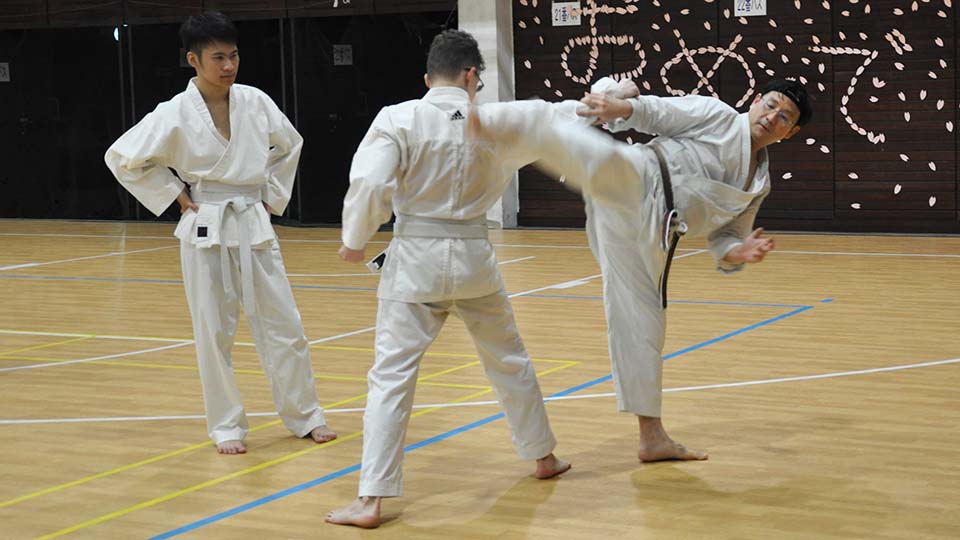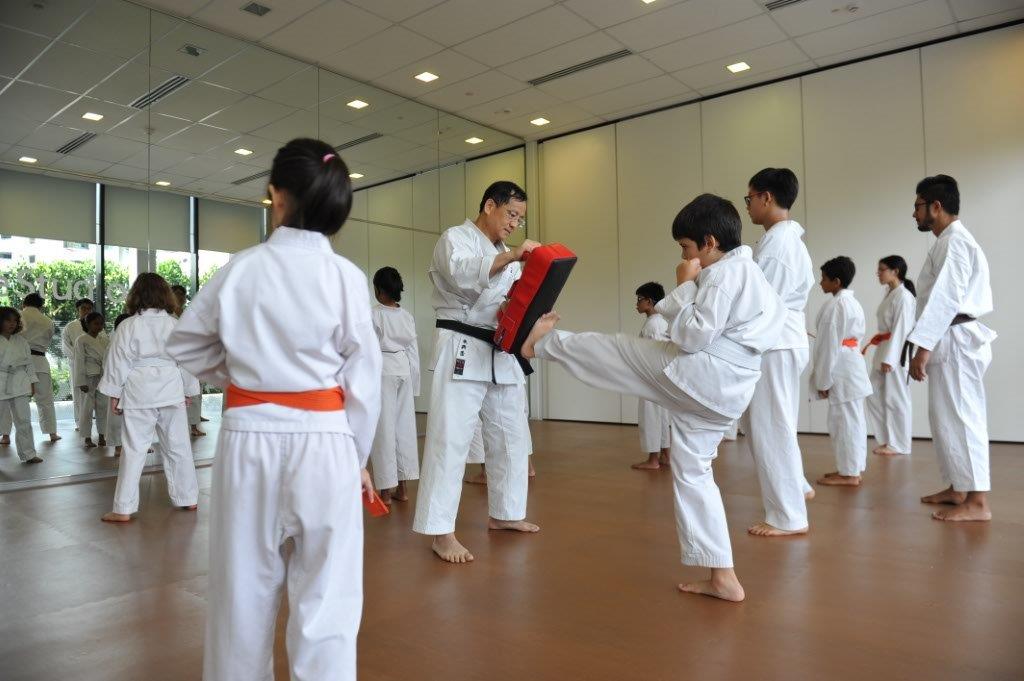Unlike the Karate Kid who learned karate to defend himself from bullies, Associate Professor Too Heng-Phon picked up the martial art after he suffered a hard knock – from a concrete sidewalk. Then already in his mid-30s, the painful fall and slow recuperation made him realise that he could no longer take his physical condition for granted.
The biochemistry professor decided to join the Ken Yu Kai Karate Association Singapore, which teaches the Shitoryu style founded by Kenwa Mabuni, one of the first karate experts to teach the art in Japan. Assoc Prof Too belongs to the fourth generation of students, learning from a 75-year-old shihan (master instructor) who is the direct descendant of the founder. After more than 10 years of training, he has achieved a second dan black belt and is the vice-president of the karate association.

Karate teaches me discipline and focus in work, in life and in play. You basically live the moment.
Despite his busy work schedule, Assoc Prof Too commits three days weekly to training as well as teaching the martial art to children and adults. During classes, all advanced-level participants share knowledge of their best moves unreservedly. The self-proclaimed karate aficionado really enjoys the interaction and feels “out of sorts” when he skips his practice. He has even extended his love for the martial art to his son, coaching him since eight years old. The 15-year-old now holds a brown belt.
A class at the Ken Yu Kai Karate Association, where many NUS students learn the martial art
Assoc Prof Too identifies with the philosophy behind karate. “Every time we move, we start with a block and never a strike. That’s what I find amazing – you know you can hurt somebody but you avoid it,” he stressed on the seemingly counter-intuitive principle.
Karate is a very structured sport, with direct moves for speed and maximum impact, capturing its tenet of “one punch, one kill”. Beginning with soft moves and blocks, karate progresses to “borrowing” the strength of the attacker such that the blow can be deflected. After gaining greater control of one’s moves, only then are the lethal moves imparted to the higher-ranked belt wearers. However, the tough striking approach represents the last resort. “We instil in our learners the importance of knowing their strengths and abilities,” he said.
Assoc Prof Too believes that karate is suitable for all ages – his pupils range from five years to senior citizens – since there are many levels catering to different comfort zones. Girls perform just as well since they can leverage speed and precision to hit the right spots, instead of physical strength.

Children as young as five have joined Assoc Prof Too’s karate class
Teaching kids could be demanding as they need to be managed, incentivised, praised and guided to grow in the art, Assoc Prof Too conceded. However, he is gratified when he sees his protégés develop and achieve their full potential.
Besides its health benefits, karate provides Assoc Prof Too respite from his work, calming him and keeping him balanced. He shared that the martial art enables him to better understand himself and face challenges in a hectic world.